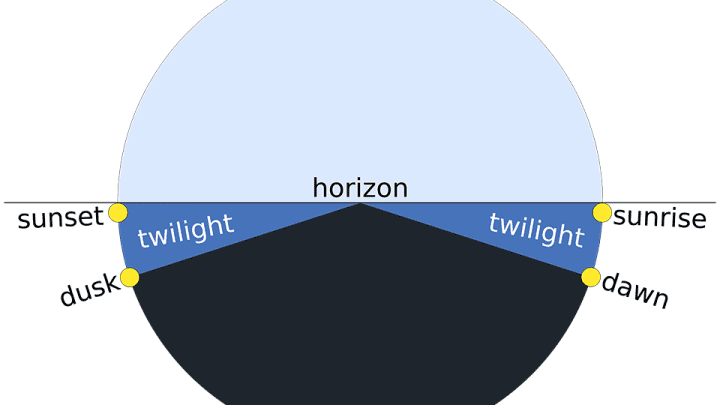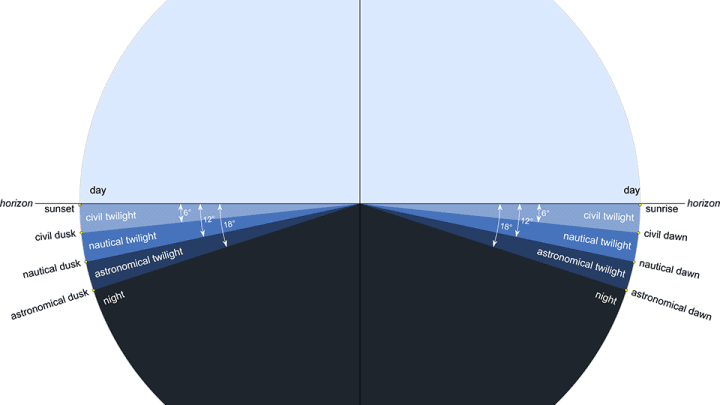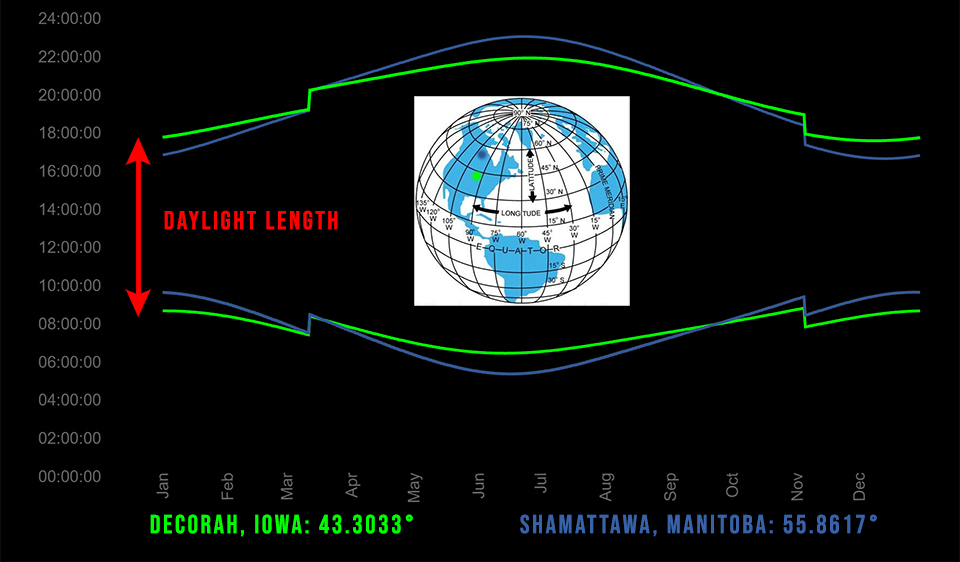It’s September 9 and migration is well underway for many birds! According to birdcast.info (https://birdcast.info/) the next couple of nights should be very busy for nocturnal migrants along the length of the Mississippi Flyway. Good luck, everybody. We hope to see you next year!
We were asked about some terms I used in our last eagle postcard. So what is true night? Let’s start with twilight! The Oxford Dictionary defines twilight as ‘The soft glowing light from the sky when the sun is below the horizon, caused by the refraction and scattering of the sun’s rays from the atmosphere‘. We invoke twilight’s liminal, numinous space to describe beauty, clarity, decline, contemplation, joy, sorrow, and the complicated relationships between humans, vampires, and werewolves (just google ‘twilight’ if you don’t believe that last one).

General twilight at dawn and dusk
However, metaphors aren’t helpful when it comes to astronomical and nautical calculations, which is why the US Naval Observatory divided morning and evening twilight into three geometrically defined phases according to solar elevation angle.
- Civil twilight occurs when the sun is between its rising or setting and 6 degrees below the horizon.
- Nautical twilight occurs when the sun is between 6 and 12 degrees below the horizon.
- Astronomical twilight occurs when the sun is between 12 and 18 degrees below the horizon.

Geometrically defined twilight phases determined by the sun’s angle
So what do these phases look like to the human eye?
D27 was up on the 55th parallel near Shattamwa, Manitoba from July 16th through August 10th. Since the sun never dipped more than 18 degrees below the horizon, she never experienced night – or what I referred to as ‘true night’ in the eagle map blog. I like to picture her perched on a conifer branch above the endless expanse of the Hudson Lowlands. A brief astronomical twilight rotates around the horizon while the northern lights dance high above her and a band of polarized light sweeps across the night sky. She can’t calculate magnetic flux, define twilight stages, or map light polarization vectors, but she knows them in her bones and watches as they ebb and flow across the dimly lit sky.
Did you know?
It’s September 9th and while the days are getting shorter everywhere in the Northern Hemisphere, we still have shorter days at lower latitudes and longer days at upper latitudes. For example, bald eagles on the 55th parallel will get 13 hours and 10 minutes of sunshine on September 9, while bald eagles on the 43rd parallel will have to settle for a shorter 12 hour and 51 minute day. On the September 22 equinox, bald eagles in both locations will experience days that are twelve hours long. And on October 31, bald eagles on the 55th parallel will get 9 hours and 34 minutes of daylight, while their counterparts in Decorah enjoy a longer 10 hour, 19 minute-long day. So the days will continue getting shorter in both places, but they will get shorter more rapidly at higher latitudes. We think of our world as proceeding at a relatively stately place, but it is more like an offset flashing, spinning disco ball illuminated by a giant, rotating, tempestuous light! Yes, it’s a disco inferno! https://youtu.be/pG8TyIEAqps

Daylight length throughout the year: 55 and 43 parallels north
If you want to calculate your sunrise, sunset, and solar noon, check out NOAA’s solar calculator: https://gml.noaa.gov/grad/solcalc/.
About those twilight definitions! The term ‘Civil Twilight’ is generally credited to a polymath named Johann Heinrich Lambert, but its first appearance in English appears to have been in The Ladies Diary, or Woman’s Almanack. Learn more about The Ladies Diary here! https://www.maa.org/book/export/html/1467338.
When did we define the three stages of twilight? I couldn’t find any decent references, but the US Naval Observatory Astronomical Almanac had a lot to do with it: https://aa.usno.navy.mil/publications/asa_history. The Miscellaneous Documents of the Senate of the United States, 1857 mentions civil twilight, but does not use the modern definition. Note that the Almanac was first published by the Astronomer Royal of England in 1766. People have spent a long time trying to figure this stuff out! Also, the American day started at noon until 1925, when civil time was introduced? I had no idea!
Image Credits
 The Raptor Resource Project
The Raptor Resource Project The Raptor Resource Project
The Raptor Resource Project